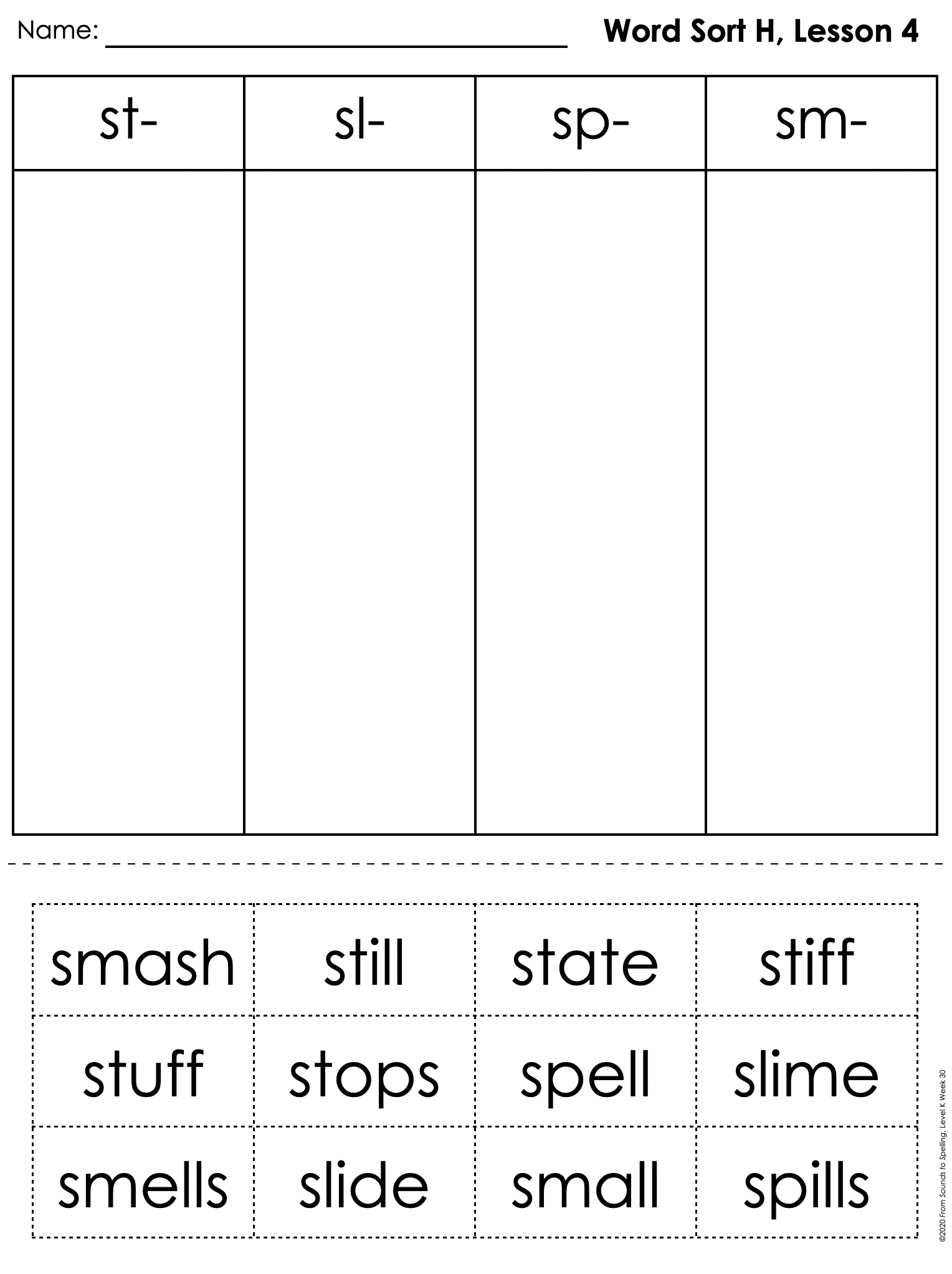
How To Use Word Sorts in 1st & 2nd Grade
Word sorts are a great tool for helping students practice phonics skills!
In a word sort, students read words (typically on cards or small pieces of paper) and sort them based upon their patterns.
In the example above, students sort words based upon their initial blend. They read the words, cut them apart, sort them, and then read the words again.
You can work on so many different skills with a word sort - digraphs, vowel sounds, prefixes, suffixes, and lots more.
How To Implement Word Sorts
When you first introduce word sorts to students, you'll want to thoroughly model completing one. A document camera is a helpful tool to have, because students can see you cut and sort the words as if they were right there next to you.
When you model doing a word sort, point out how you:
- Cut "efficiently" (cut on the lines rather than cutting out each word individually)
- Look for the pattern
- Use the appropriate amount of glue when gluing the words down
- Glue words down neatly, leaving enough space for all of the words
- Read all of the words at least twice
You will want students to all do the same sort at first. At the beginning of the year, you may choose a simple sort that you know all your students will be successful with.
Model how to read, cut, sort, and glue down the words - and then have students do the same sort. And no, this won't be incredibly challenging for them because they just saw you do it, but you want them to focus on learning the procedures for completing a sort.
Whenever you have students complete a word sort, make sure to provide support with decoding the words (so you're sure they actually know how to read them) - and discuss what the words mean, too.
Different Ways to Use Word Sorts
A "cut and paste" sort is just one way to use a word sort! You may also consider having students practice sorting their words and not gluing them down - saving them in a baggie for future re-sorting.
After students have done a sort once, they might re-sort the words using one or several of these activities:
- Speed sort: They time themselves reading and sorting the words, then do it again to try and beat their time.
- Partner sort / sort and write: Students work with a partner. One student acts as the "reader" and one student as the "writer." The reader keeps the word sort cards and reads one aloud, one at a time, to the writer. The writer must spell the word correctly AND write it in the correct column on the sorting paper. The reader then checks their work. Students might go through half of the words in this way and then switch roles. (If you're having a hard time picturing this, think about the sort pictured above, for example - the reader would have the word cards and the writer would have the columns that say sk/sl/sp/st, and they'd write in those columns.)
Differentiating Word Sorts
Since not all students will be at the same level, it's helpful to provide students with different word sort options. Here are some examples that go with the s-blends sort featured above. The first option here is an easier sort, and the second option is a more challenging one.
Some phonics programs incorporate word sorts to help students compare and contrast the phonics patterns they're learning.
Our phonics program, From Sounds to Spelling, includes many differentiated sorts like these. To learn more about the program, visit this link. To try some phonics sorts that are totally FREE, please click here.







